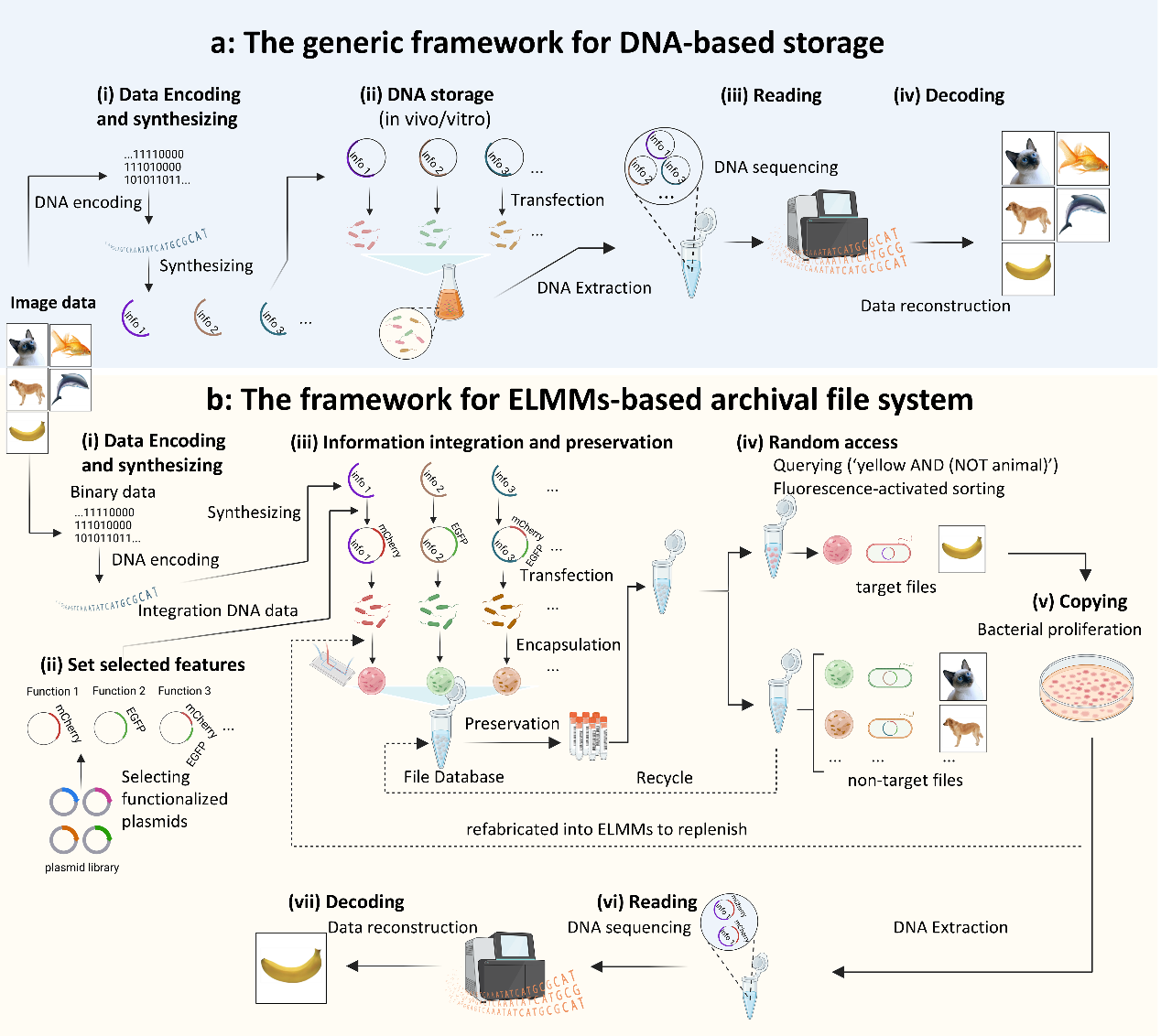In the field of data storage, DNA storage technology has garnered significant attention due to its advantages, including high density, long lifespan, low energy consumption, and enhanced security. Recently, a team led by Professor Xiong Zhuo from the Department of Mechanical Engineering at Tsinghua University proposed a novel DNA data storage system based on Engineered Living Memory Microspheroids (ELMM), offering a new solution for large-scale data storage.

Figure 1. DNA Storage System Based on the Engineered Living Memory Microspheroids
Traditional DNA storage methods face challenges such as low data retrieval efficiency, high storage costs, and insufficient data stability. Professor Xiong’s team addressed these issues by inserting encoded DNA information into plasmids equipped with fluorescence expression capabilities, which were then transformed into bacteria. Using microfluidic technology, these bacteria were encapsulated within hydrogel microspheroids, successfully creating the ELMM. These microspheroids not only effectively shield genetically modified bacteria from environmental interference and prevent leakage but also utilize bacterial fluorescence as markers for rapid data retrieval and classification. The team further demonstrated the long-term stability of ELMM at room temperature, confirming its functionality through multiple cycles of lyophilization and rehydration. Additionally, they showcased the system’s high retrieval efficiency, achieving rapid access to specific DNA data using Fluorescence-Assisted Sorting (FAS) technology. Even with extremely low copy numbers (approximately 10 copies per file), data could be accurately retrieved and amplified quickly and cost-effectively via bacterial replication, with a theoretical retrieval speed of up to 196.72 MB/s. This system has the potential to store approximately 260,700 petabytes (PB) of information within the volume of a typical household refrigerator (1.5 m³). The research overcomes technical bottlenecks in existing DNA storage methods, paving the way for practical applications and providing an efficient, stable, and sustainable solution for future large-scale data storage.

Figure 2. Workflow of Traditional DNA Storage System (a) and ELMM-based DNA Storage System (b)
The related research, titled "Engineered Living Memory Microspheroid-Based Archival File System for Random Accessible In Vivo DNA Storage," was published online on February 21 in the journal Advanced Materials.
Professor Zhuo Xiong is the corresponding author, and Hao Luo, a 2021 PhD student from Tsinghua University’s Department of Mechanical Engineering, is the first author. Other contributors include Wen Huang, a former research assistant in the Department of Mechanical Engineering, Zhonghui He, a 2020 undergraduate from the School of Life Sciences, Assistant Professor Yongcong Fang from the Department of Mechanical Engineering, and postdoctoral researcher Yueming Tian from the same department.
Link to the paper: https://doi.org/10.1002/adma.202415358







